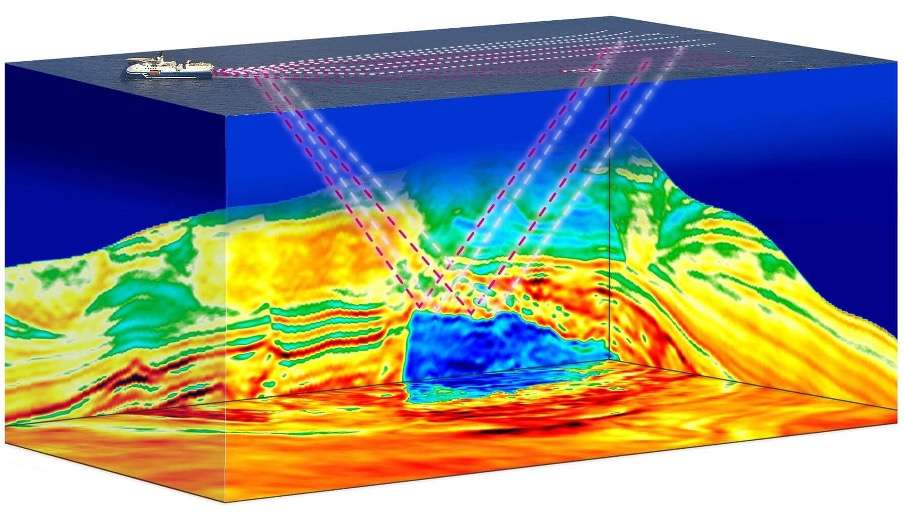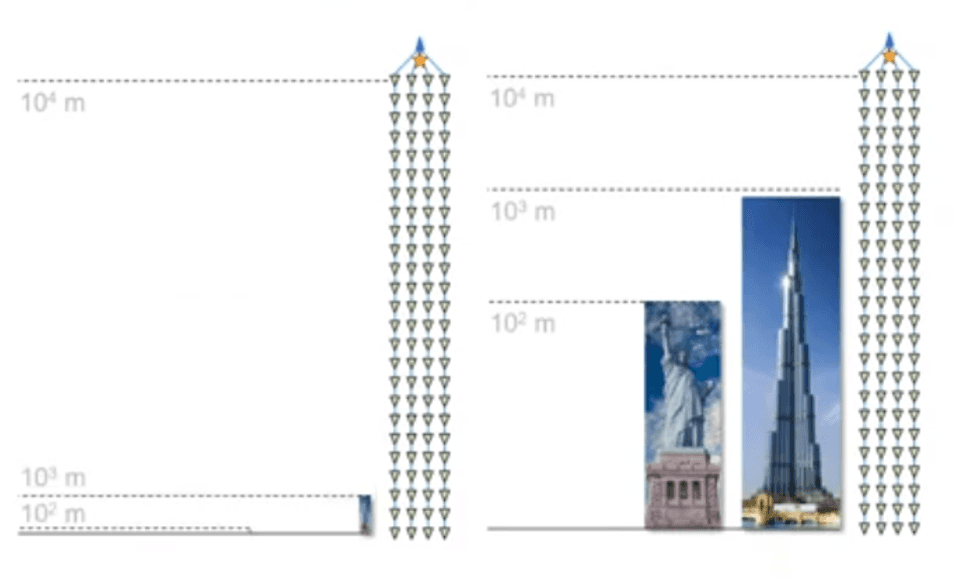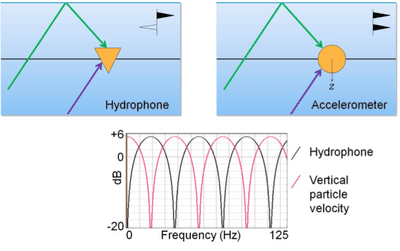Added: 21st December 2023 by CGG
Much of the world’s oil & gas is found offshore and is often several kilometres beneath the seabed. Although exploration for new hydrocarbon reserves has probably peaked as the world moves through the energy transition, development and production of known resources continues; combined with recent developments in deep sea mining and geological carbon storage this means there is continued demand for geophysical imaging of the subsurface using seismic methods.

The most cost-effective way to acquire geophysical data in the marine environment is using specialised ships towing arrays of underwater sources and hydrophones. Surveys can vary from several hundred to tens of thousands of square kilometres penetrating 10-15 kilometres into the Earth’s crust.
The image below courtesy of CGG compares a typical towed-streamer seismic receiver array at logarithmic and true scales against two well-known man-made structures.

One unique aspect of acquiring acoustic data in a marine environment is what happens at the sea surface where air and water meet. The huge difference in acoustic impedance means incident waves are almost completely reflected back from the interface and these mirror or ghost arrivals then interfere with the primary wavefield returning from the subsurface. The destructive interference that occurs is particularly detrimental to the lowest frequencies which are the most important for model building.
It is possible to remove the effect of the ghosts through signal processing, however in isolation applied to conventional single-sensor hydrophone (pressure) data this can only partially compensate for the signal loss, especially if the signal-to-noise ratio is low. If deghosting is combined with multi-sensor data where you have co-located hydrophones and accelerometers (i.e. you have both pressure and velocity) then it then becomes possible to remove the receiver ghosts and significantly improve the bandwidth of the seismic data.
In the pressure data the polarity of the original primary wavefield is reversed by reflection from the sea surface, but in the case of particle velocity data there is an additional reversal due to its sensitivity to the propagation direction. The opposite polarities of the hydrophone and particle velocity ghost wavefields mean that the two recorded data sets can be summed together so that the ghosts cancel each other out (P-Z summation).

However, one of the practical issues in applying a straight P-Z summation is the high noise levels recorded on accelerometer data. The signal to noise ratio is particularly poor at low frequencies due to occurrence of aliased transverse vibrations.
At higher frequencies, noise may be present generated from equipment mounted on the cable. Noise attenuation processes can remove the noise but are time-consuming and can damage signal.
To overcome the issue with the noise, an inversion-based joint deghosting approach was developed with the upgoing wavefield (the target of the inversion) constrained by hydrophone data and wavefield separated data with noise contamination. The wavefield separated data may be either upgoing (derived from P-Z summation) or downgoing (from P-Z subtraction).
An important part of the process is the use of weighting derived from a comparison of the measured particle velocity data with particle velocity data reconstructed from the measured hydrophone data. These weights can vary as a function of time, space and frequency, in response to different signal to noise ratio conditions at different frequencies.